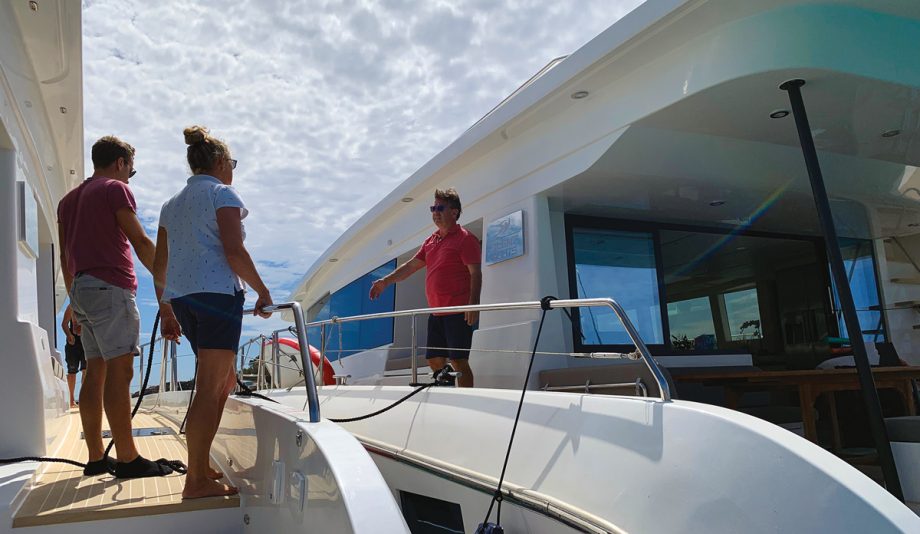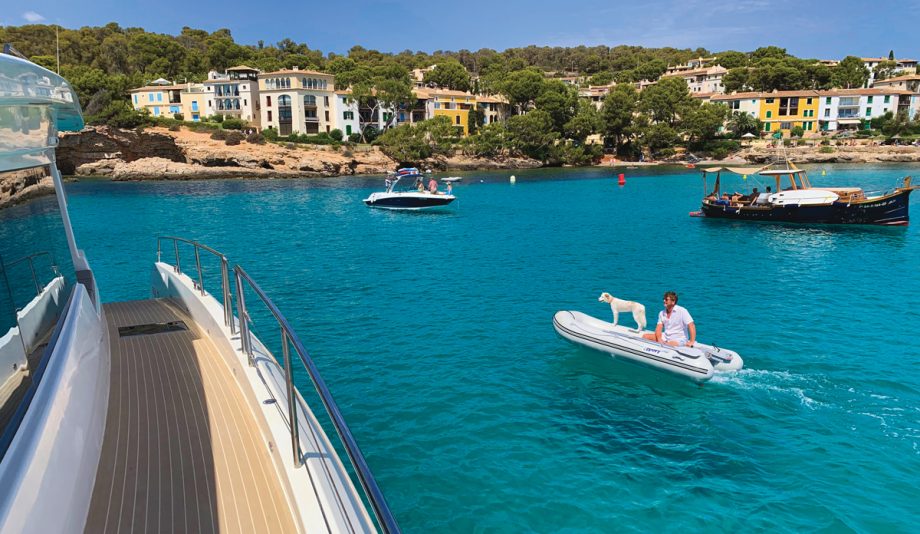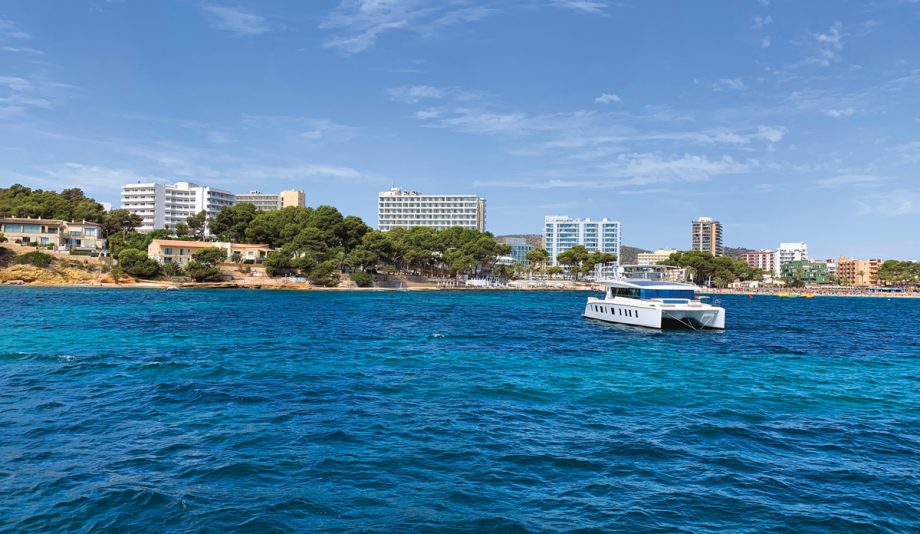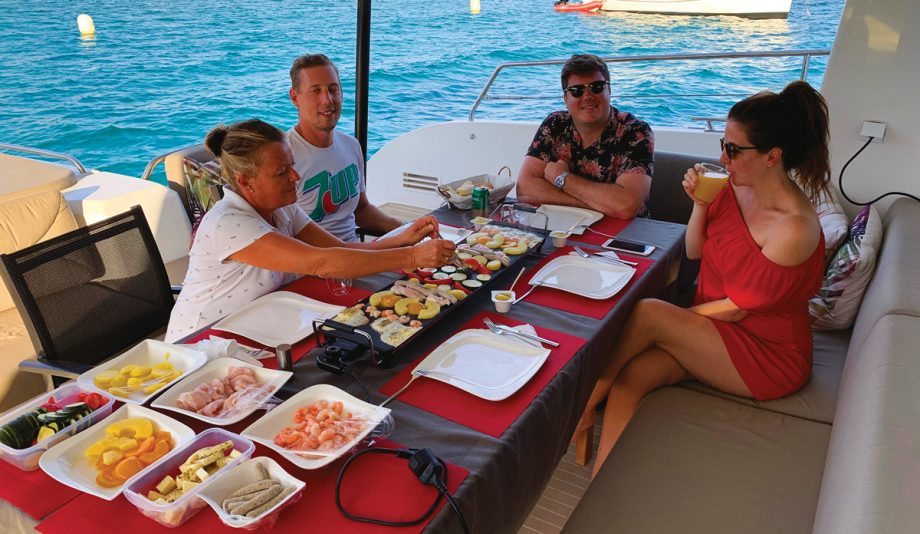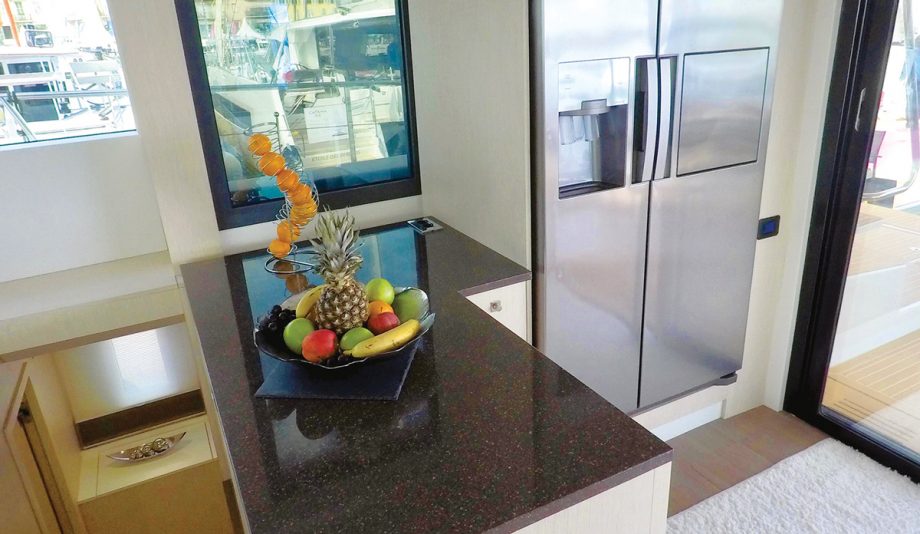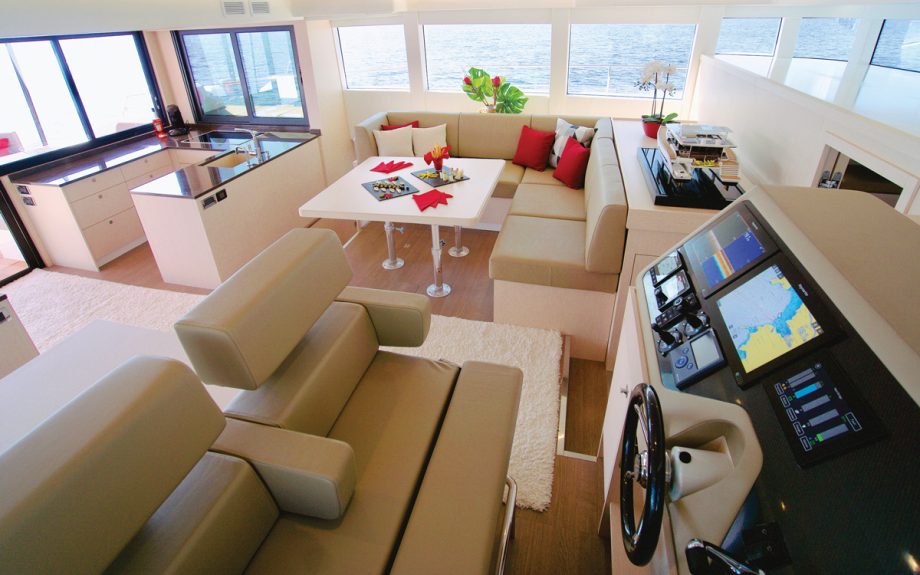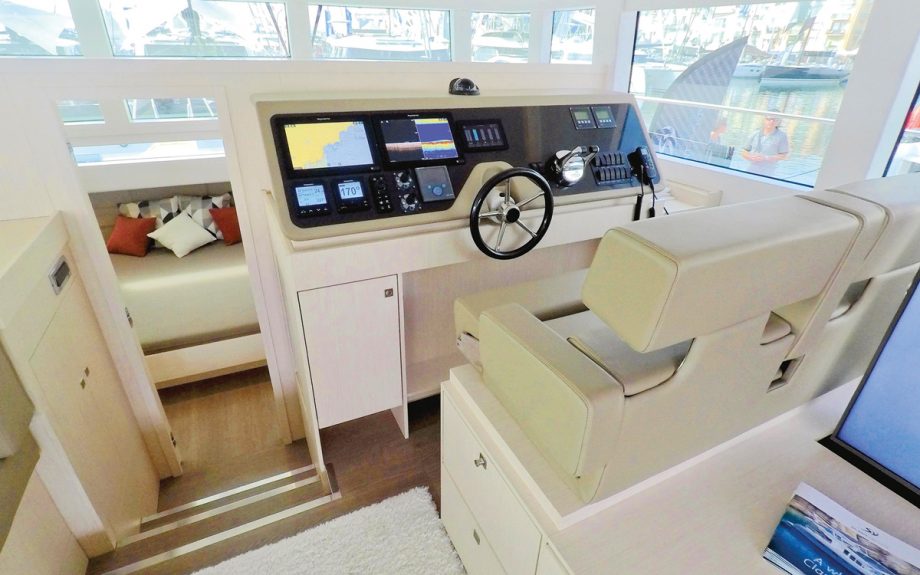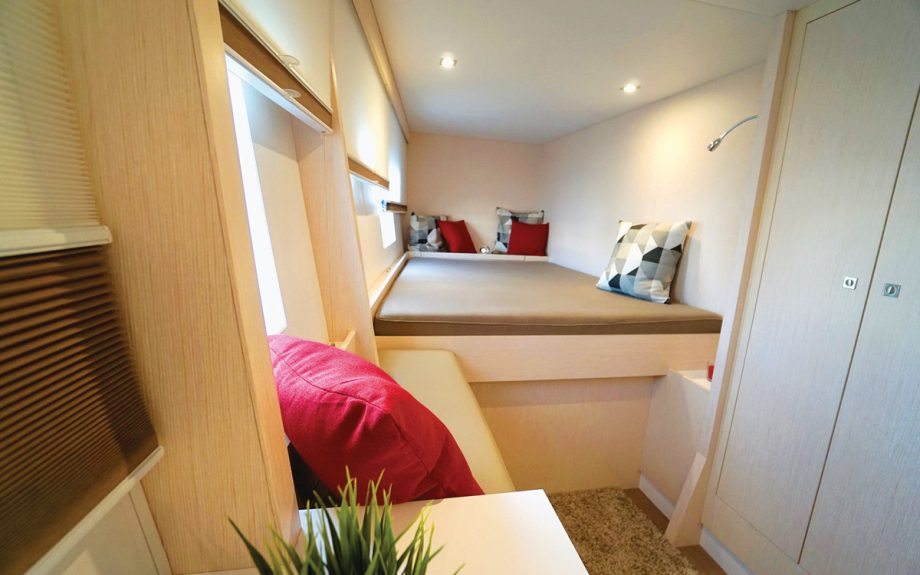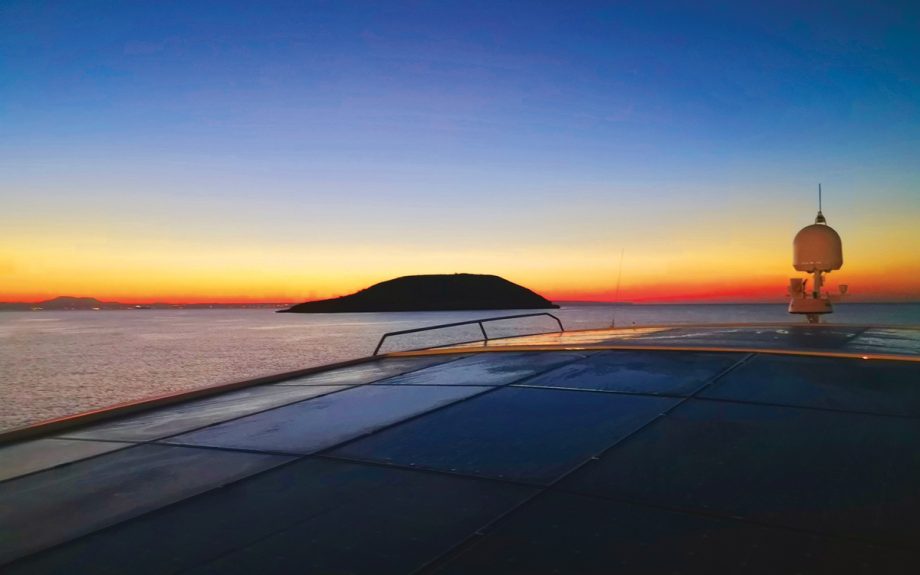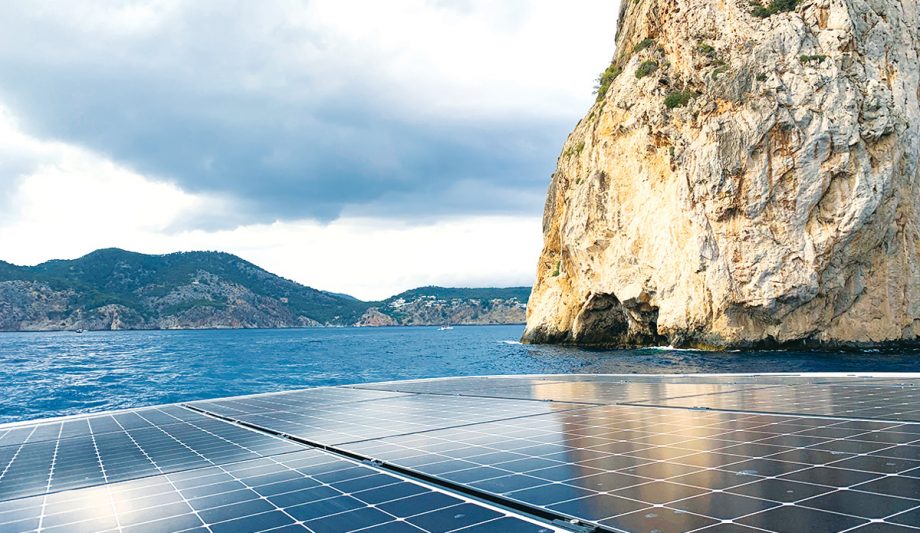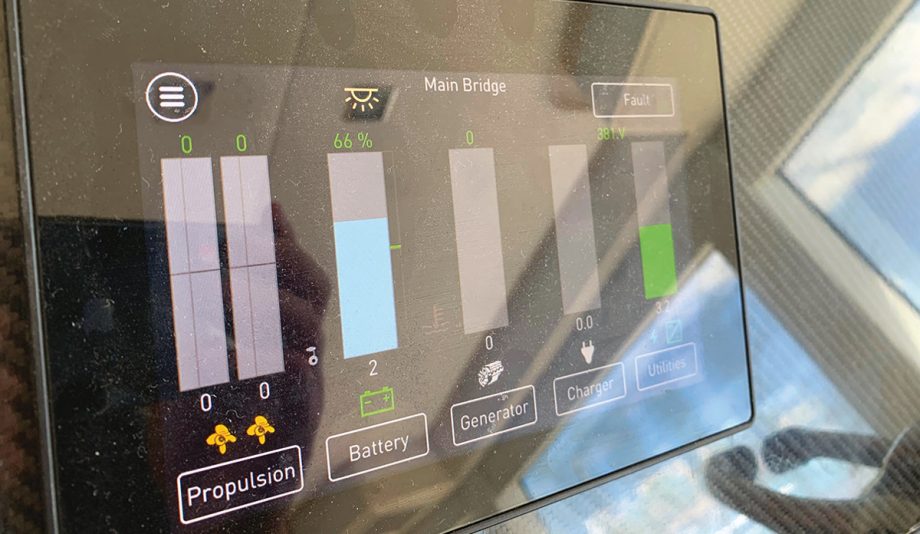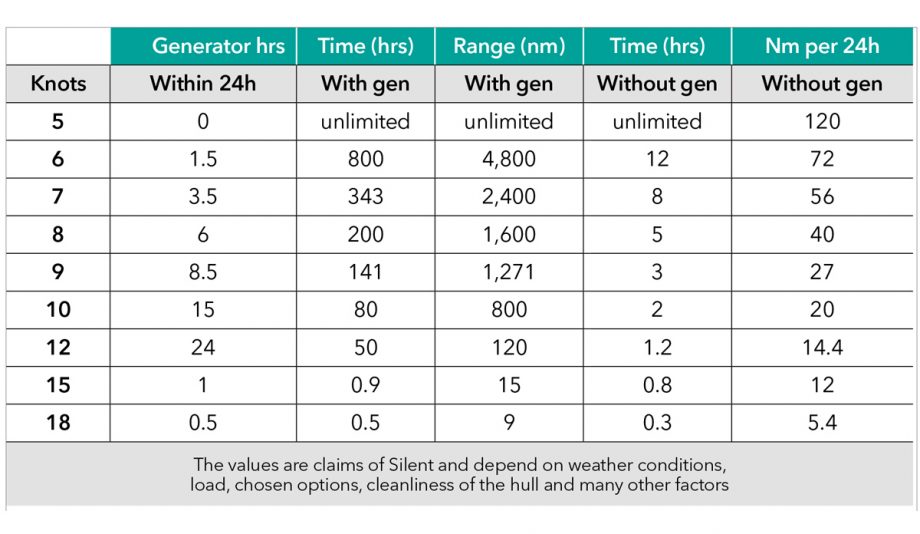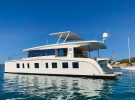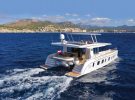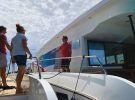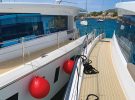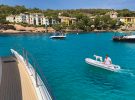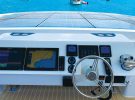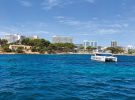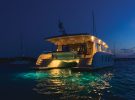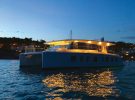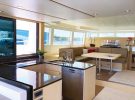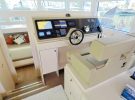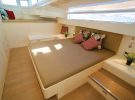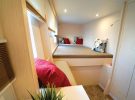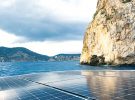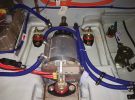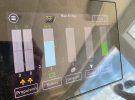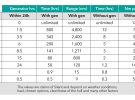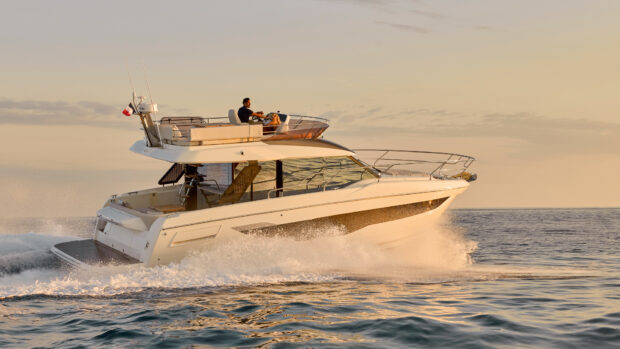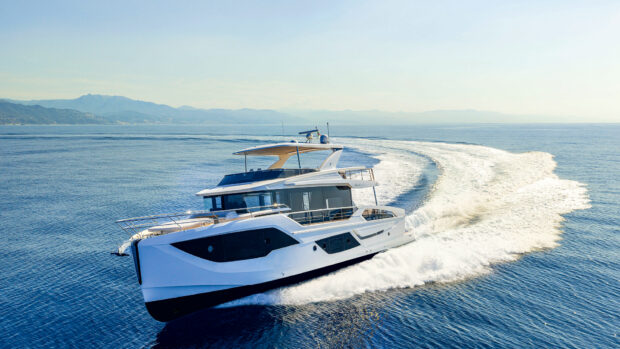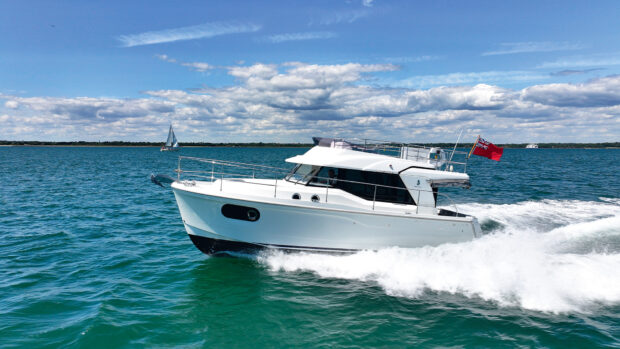An extended stay on board the revolutionary Silent Yachts 55 allows us to assess whether this really is the future of the motorboat
The April 2019 edition of MBY – our Future of Boating special – included a boat test of the Silent Yachts 55 in, shall we say, less than ideal conditions. Given that the boat is a solar-powered power catamaran the sheeting rain that we endured during our short sea trial somewhat hindered the boat’s ability to show us what it could do.
At the time I lamented the weather and commented that to assess properly whether the Silent 55 is a viable cruising machine we’d need more time on board to test its technology in realistic conditions and, ideally, somewhere sunny. Luckily, Silent Yachts agreed so in July we headed out to Mallorca to live aboard the boat for three days to see if it works.
Our meeting point is Santa Ponsa in Mallorca’s south west, not the most salubrious of locations, but the bay, with shelter from the prevailing winds and excellent holding, is where the Silent Yachts team base themselves for the summer months.
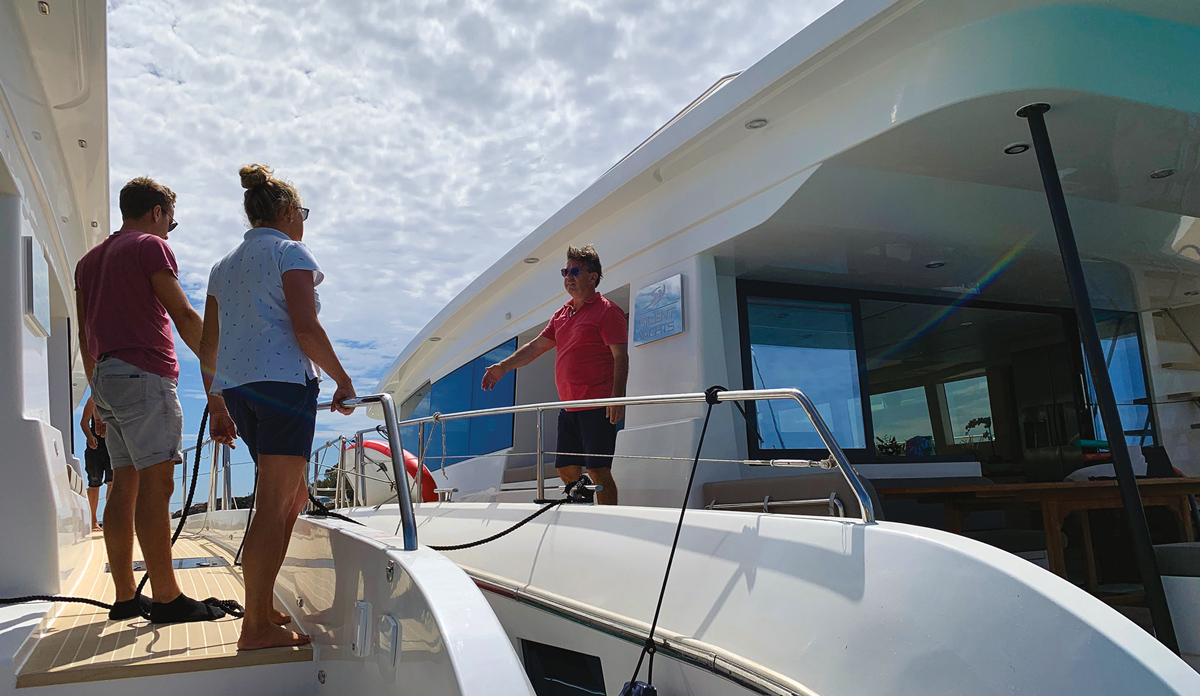
The crew meet up with another Silent 55 on charter in Mallorca
It says much about the liveaboard potential of this boat that Silent Yachts’ CEO Michael Köhler and his wife Heike run the business from the Silent 55 during the season and are regularly joined by members of their team and potential clients so that they can experience the boat for themselves.
A sailor at heart, Michael is not a man who likes to be tied to marinas (they spent one night in port last season) so this tranquil anchorage is ideal. We are met on the quayside by the tender (powered by a Torqeedo electric outboard, naturally) and whisked silently towards the transom of the awaiting Silent 55 where we are welcomed by the Köhler’s Australian sheepdog, Tinker, and meet the other crew members Euan and Christian, who both work for the shipyard.
Every berth on board is occupied, meaning the boat’s living spaces and the technology used to keep the creature comforts running smoothly are going to be thoroughly tested.
Article continues below…

VIDEO: Silent Yachts 55 review
The Silent Yachts 55, with its battery bank and solar panels, is a glimpse into the future of motorboats, but
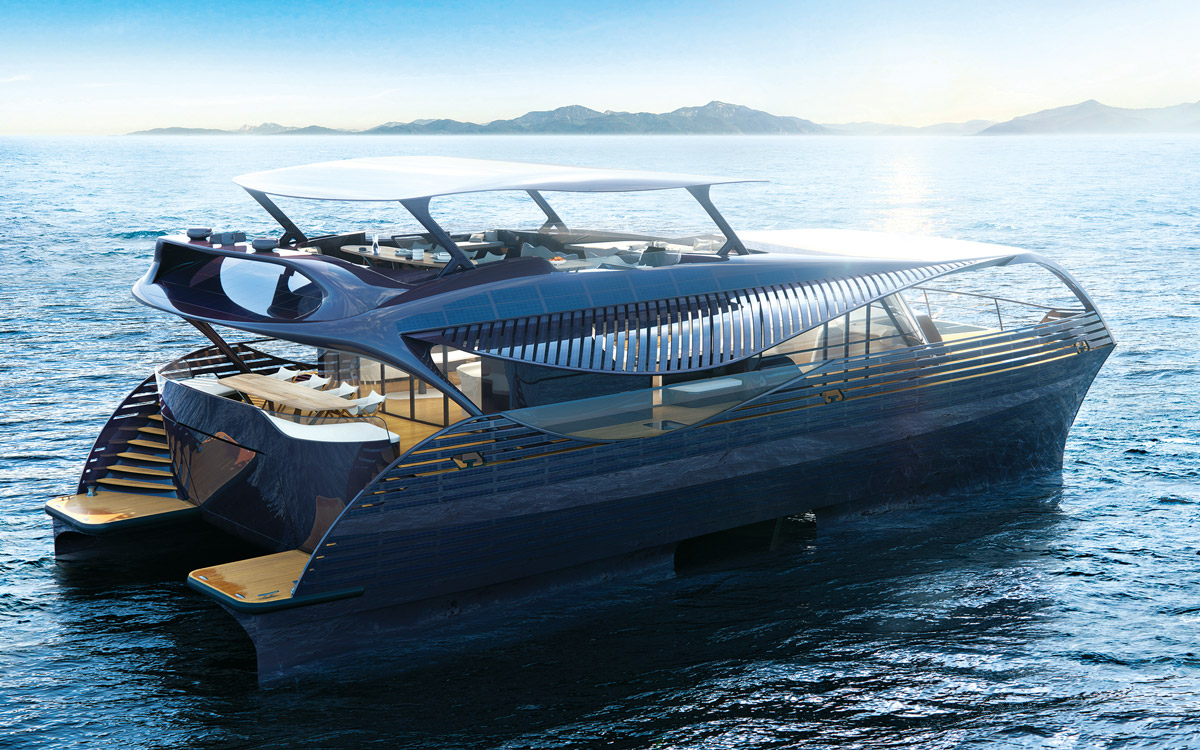
Welcome to the future: 5 futuristic yachts being built today
Our hosts graciously offer me and my wife our pick of the cabins but they usher us towards the master suite and after some token protestations, we cave and head forward to stow our bags. The master on this four-cabin version (there are five- or six-cabin options available) is a beauty that straddles the hulls and has a vast ensuite that occupies the forward portion of the starboard hull.
The bed is huge, there’s more storage space than you can shake a stick at and the separate toilet, shower cubicle and open-plan basin are particularly luxurious touches. The lack of curtains or blinds over any of the numerous windows catches my eye, however, as this odd omission was also noted on the boat I originally tested back in April.
The boat we’re on is the E-Power version; there is a Cruiser with smaller electric motors and a Hybrid, which mates two 14kW electric motors to a pair of 220hp diesel engines. Our boat has two 250kW (the equivalent of 335hp each) electric motors, an array of 30 solar panels on the roof with a maximum output of 10kW and a 210kWh battery bank.

With there being no engine noise the skipper could make an early start without disturbing charter guests
This neatly interlinked system is tasked with propelling the boat up to a top speed of 18 knots and running its domestic supply, which on top of the usual lighting and sockets includes an American-style domestic fridge/freezer, air-conditioning and a water maker. There is some internal combustion going on, though, because there is a 100kW generator on board, employed as a range extender or charging aid if there is nothing but liquid sunshine in the air.
It’s a beautiful late afternoon so we haul the anchor and creep, in total silence, past our neighbouring boats for a shakedown around the headland. Much of the driving experience is the same as a boat with engines: you turn a key to activate the drivetrain and, though there is no gearbox, the throttles still have neutral, forward and reverse settings – more for their familiarity than anything else.
And it is totally silent; the gearbox whine of the boat I tested earlier this year now eradicated, all you can hear is the gentle swish of water folding around the bathing platform.

The solar array is most effective with the hardtop retracted so it doesn’t shade the other panels
Though our boat has twin 250kW motors it’s only got 70kW of power per side because it is still in the final stages of manufacturer testing, which is a shame. That said, even with the full 500kW on tap, you’re still going to run the boat most economically at 6 knots.
Even an increase of speed to 10 knots could decrease running time by two hours or more, so it pays to stick in the slow lane – no hardship on a power cat of such dimensions and inherent stability with a litany of places to chill out in as the boat glides towards its destination.
We found ourselves gravitating towards the padded nets on the foredeck where you can sit with the sun on your face and breeze in your hair, gently bobbing up and down with the motion of the swell. The nets, your proximity to the water and the hushed progress engender a unique connection to the sea beneath you that is really rather special.

Returning to the Silent 55 after an evening walk ashore
Though we have over 50% charge in the batteries Michael fires up the generator on the way back to base to top them up a touch; doing this while running is the best time because you barely notice the noise of the generator on the move.
We awake early the next morning as bright sunshine cascades through the windows of our cabin. Every other cabin on board is fitted with blinds, but the splendour of our huge master suite is dampened a touch by the lack of them in here. The windows are at least heavily tinted so we can get changed safe in the knowledge that we can’t be seen by the crew on deck.
These quibbles evaporate as we head to the main deck for breakfast, which is laid out invitingly on the sprawling cockpit table. This is the heart of the boat, an area where the cockpit and galley merge and one where the crew naturally congregates. The weather is beautiful so we plan a longer cruise to an anchorage a few miles east near Puerto Portals.

Breakfast at anchor is the norm when shore power isn’t an issue
With the sun beating down already we depart our base with 65% charge in the batteries, pick up the 6-knot cruising speed and settle in for the ride. To get the best out of this boat you have to think like a sailor when passage planning, manipulating the elements as best you can so that they are helping and not hindering progress.
Tidal flow or current and wind direction all have an impact on range so it pays to have nature’s forces on your side. If high-speed blasts between islands is your thing then this boat isn’t going to work for you, but if time is your friend then the Silent 55 makes a lot of sense. Consider this too, if it’s autonomy you’re after then the 55 is in a league of its own. You only need to head in to port to top up with water (if you don’t have the water maker) and replenish food stocks.
With a 600-litre diesel capacity the generator’s tank will not need regular fills and there are no mechanicals to service apart from the generator itself so you need to carry very few spare components. You don’t depend on shore power either so if you genuinely want to live on board and get away from the crowded surroundings of a marina this boat delivers that.

The internal dinette is the team’s workspace during the summer months
The powercat frame is ideal for this usage too, given the sheer amount of living space. Where you’d normally find a pair of big engines are two enormous storage voids because the compact electric motors live beneath the floor in the aft cabins. Its twin hulls and 27ft 7in (8.46m) beam endow it with inherent stability, too, creating what feels like your own little island and a tremendous base from which to enjoy the piercing blue water of a Mallorcan cove.
She’s electric
Our 10nm mile journey on electric power took around two hours and during that trip the charge diminished from 65% to 48% (giving a theoretical range of 59 miles on a full charge). Once the anchor hits the seabed we use just 2kW of power running the domestic supply, though there is a spike when we turn on the air-conditioning to cool the cabins down before bed.
There is sufficient energy to run the air-con without turning the generator on, but with a stiff breeze blowing through the boat a quick blast is all we need for a comfortable night’s sleep. As the day boats make a dash for home at dusk, the bay becomes our own and after a refreshing dip we shower and change before the teppanyaki grill is set up on the cockpit table and we prepare to enjoy a beautiful dinner as the sun melts into the horizon.

This spectacular Mallorcan sunset marks a suitable end to a day of silent cruising
The next day we have to return to Santa Ponsa so it’s up early for a glorious morning dip to shake off the previous evening’s digestif. The pace of life mirrors the pace of boat, but we decide to have breakfast on the move so we can get back to base before it gets too busy.
With there being no engine noise or vibration the skipper could easily make an early start without disturbing charter guests, something you would struggle to achieve on even the most well-insulated diesel boats.
Maybe it was the Mallorcan sun or a case of being caught in the moment but as we cruised silently west and I took to the cosy perch on the Silent 55’s port side deck I couldn’t help thinking what hard work it looked as other boats charged about with their bows in the air and guests glued to their seats. We pull up in Santa Ponsa with a healthy 37% of charge remaining in the batteries.
Our verdict
The Silent 55 is not perfect and you can see and feel the yard’s immaturity in the rudimentary finishing in places. I also have an issue with the terrible view from the lower helm, even though you spend most of your time helming from the flybridge. Nor is the Silent 55 a handsome craft; designs for the 80 and 60ft versions show a far more attractive look with much neater proportions and a tidier window line.
In early September, though, I receive a video from Michael via WhatsApp. It’s of him standing on one of the bathing platforms as the Silent 55 charges through the water at 17 knots on electric power. The testing phase, it seems, is complete and all 500kw can be laid down at once; it’s quite a sight to see the boat travelling at such speed with no engine noise whatsoever. The boat may still need some of its rough edges smoothing off but the technology works and sets an important motorboating milestone.
Price as reviewed:
£1,730,000.00 (ex. VAT)
Details
Price from : €1,400,000 ex VAT
LOA : 54ft 8in (16.7m)
Beam: 27ft 7in (8.46m)
Draught : 2ft 1in (0.64m)
Displacement : 19 tonnes (light)
Fuel capacity : 600 litres (132 gal)
Water capacity : 500 litres (110 gal)
RCD category: A for 12 people
Design: Michael Köhler & iYacht





